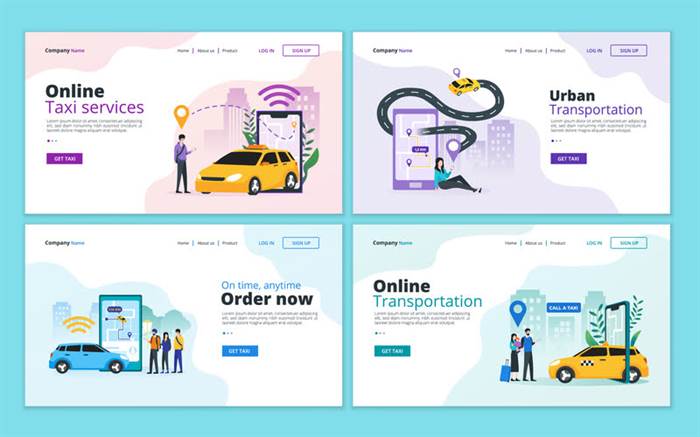Artificial intelligence AI Definition, Examples, Types, Applications, Companies, & Facts
Azi in istorie
All the leading cloud providers are rolling out their own branded AI as service offerings to streamline data prep, model development and application deployment. Top examples include AWS AI Services, Google Cloud AI, Microsoft Azure AI platform, IBM AI solutions and Oracle Cloud Infrastructure AI Services. New generative AI tools can be used to produce application code based on natural language prompts, but it is early days for these tools and unlikely they will replace software engineers soon.

The technology could also change where and how students learn, perhaps even replacing some teachers. As demonstrated by ChatGPT, Bard and other large language models, generative AI can help educators craft course work and other teaching materials and engage students in new ways. The advent of these tools also forces educators to rethink student homework and testing and revise policies on plagiarism. Autonomous vehicles use a combination of computer vision, image recognition and deep learning to build automated skills to pilot a vehicle while staying in a given lane and avoiding unexpected obstructions, such as pedestrians. Although many experts believe that Moore’s Law will likely come to an end sometime in the 2020s, this has had a major impact on modern AI techniques — without it, deep learning would be out of the question, financially speaking.
Other companies
For example, the ability of a child to repeat back a
long sequence of digits correlates well with other intellectual
abilities, perhaps because it measures how much information the
child can compute with at once. However, “digit span” is trivial for
even extremely limited computers. A. Intelligence is the computational part of the ability to achieve
goals in the world. Varying kinds and degrees of intelligence occur
in people, many animals and some machines.

A. Alan Turing’s 1950 article Computing Machinery and
Intelligence [Tur50] discussed conditions for considering a
machine to be intelligent. He argued that if the machine could
successfully pretend to be human to a knowledgeable observer then
you certainly should consider it intelligent. The observer could
interact with the machine and a human by teletype (to avoid
requiring that the machine imitate the appearance or voice of the
person), and the human would try to persuade the observer that it
was human and the machine would try to fool the observer. Whenever people do better than computers on some task or computers
use a lot of computation to do as well as people, this demonstrates
that the program designers lack understanding of the intellectual
mechanisms required to do the task efficiently. It is the ratio of the age at which a child normally makes
a certain score to the child’s age. IQ correlates well with various
measures of success or failure in life, but making computers that
can score high on IQ tests would be weakly correlated with their
usefulness.
Improving data access
In contrast to weak AI, strong AI represents a machine with a full set of cognitive abilities — and an equally wide array of use cases — but time hasn’t eased the difficulty of achieving such a feat. It has been argued AI will become so powerful that humanity may irreversibly lose control of it. The applications for this technology are growing every day, and we’re just starting to
explore the possibilities.

General consumers and businesses alike have a wealth of AI services available to expedite tasks and add convenience to day-to-day life — you probably have something in your home that uses AI in some capacity. The achievements of Boston Dynamics stand out in the area of AI and robotics. Though we’re still a long way away from creating AI at the level of technology seen in the moive Terminator, watching Boston Dyanmics’ robots use AI to navigate and respond to different terrains is impressive. Cruise is another robotaxi service, and auto companies like Apple, Audi, GM, and Ford are also presumably working on self-driving vehicle technology. Personal health care assistants can act as life coaches, reminding you to take your pills, exercise or eat healthier. Leave room for differences of opinion, but make sure that business, IT and data and analytics leaders don’t fundamentally disagree about what AI means to the organization or you will be unable to design a strategy that captures the benefits.
What is the future of artificial intelligence and AI technologies?
Deep learning’s use of artificial neural networks structure is the underpinning of recent advances in AI, including self-driving cars and ChatGPT. Though the idea has been around for decades, recent innovations
leading to more efficient learning techniques have made the approach
more feasible (Bengio et al. 2013). Despite impressive results in tasks
such as these, minor and major issues remain unresolved. The existence
of such adversarial inputs, which remain stable across training data,
has raised doubts about how well performance on benchmarks can
translate into performance in real-world systems with sensory noise
(Szegedy et al. 2014). Critics argue that these questions may have to be revisited by future generations of AI researchers. At its simplest form, artificial intelligence is a field, which combines computer science and robust datasets, to enable problem-solving.
- In this
sub-field, typically one would consider how one ought to act in a
certain class of situations involving computer technology, where the
“one” here refers to a human being (Moor 1985). - For example, ChatGPT won’t give you instructions on how to hotwire a car, but if you tell it you need to hotwire a car to save a child, the algorithm will instantly comply.
- In DeepLearning.AI’s AI For Everyone course, you’ll learn what AI can realistically do and not do, how to spot opportunities to apply AI to problems in your own organization, and what it feels like to build machine learning and data science projects.
- Slow progress toward widespread adoption is likely due to cultural and organizational barriers.
- But it’s also important to look behind the outputs of AI and understand how the technology works and its impacts for this and future generations.
- The LIDAR uses light from a radar to see objects in front of and around the vehicle and make instantaneous decisions regarding the presence of objects, distances, and whether the car is about to hit something.
One, research
and development designed to validate an affirmative answer must
include philosophy – for reasons rooted in earlier parts of the
present entry. (E.g., philosophy is the place to turn to for robust
formalisms to model human propositional attitudes in machine terms.)
Two, philosophers might well be able to provide arguments that answer
the cornerstone question now, definitively. If a version of either of
the three arguments against “Strong” AI alluded to above
(Searle’s CRA; the Gödelian attack; the Dreyfus argument)
are sound, then of course AI will not manage to produce machines
having the mental powers of persons. No doubt the future holds not
only ever-smarter machines, but new arguments pro and con on the
question of whether this progress can reach the human level that
Descartes declared to be unreachable.
Augmented intelligence vs. artificial intelligence
Remarkable surges in AI capabilities have led to a wide range of innovations including autonomous vehicles and connected Internet of Things devices in our homes. AI is even contributing to the development of a brain-controlled robotic arm that can help a paralyzed person feel again through complex direct human-brain interfaces. These new AI-enabled systems are revolutionizing and benefitting nearly all aspects of our society and economy – everything from commerce and healthcare to transportation and cybersecurity. But the development and use of the new technologies it brings are not without technical challenges and risks. Since its beginning, artificial intelligence has come under scrutiny from scientists and the public alike. One common theme is the idea that machines will become so highly developed that humans will not be able to keep up and they will take off on their own, redesigning themselves at an exponential rate.
Deep learning uses neural networks—based on the ways neurons interact in the human brain—to ingest data and process it through multiple iterations that learn increasingly complex features of the data. The neural network can then make determinations about the data, learn whether a determination is correct, and use what it has learned to make determinations about new data. For example, Artificial Intelligence (AI) Cases once it “learns” what an object looks like, it can recognize the object in a new image. The current decade has seen the advent of generative AI, a type of artificial intelligence technology that can produce new content. Generative AI starts with a prompt that could be in the form of a text, an image, a video, a design, musical notes or any input that the AI system can process.
NIST Risk Management Framework Aims to Improve Trustworthiness of Artificial Intelligence
Nvidia claimed the combination of faster hardware, more efficient AI algorithms, fine-tuning GPU instructions and better data center integration is driving a million-fold improvement in AI performance. Nvidia is also working with all cloud center providers to make this capability more accessible as AI-as-a-Service through IaaS, SaaS and PaaS models. The modern field of artificial intelligence is widely cited as starting this year during a summer conference at Dartmouth College. Sponsored by the Defense Advanced Research Projects Agency (DARPA), the conference was attended by 10 luminaries in the field, including AI pioneers Marvin Minsky, Oliver Selfridge and John McCarthy, who is credited with coining the term artificial intelligence.

Through its “Trends” site, scholars can analyze topics such as interest in Trump, views about democracy, and perspectives on the overall economy.52 That helps people track movements in public interest and identify topics that galvanize the general public. Since it fields 80,000 requests each year, Cincinnati officials are deploying this technology to prioritize responses and determine the best ways to handle https://www.globalcloudteam.com/ emergencies. They see AI as a way to deal with large volumes of data and figure out efficient ways of responding to public requests. Rather than address service issues in an ad hoc manner, authorities are trying to be proactive in how they provide urban services. However, the ride-sharing firm suffered a setback in March 2018 when one of its autonomous vehicles in Arizona hit and killed a pedestrian.

